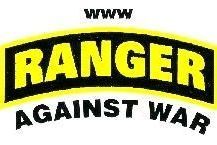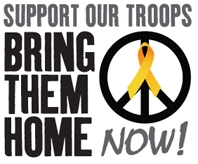Goodwill Hunting
Nobody does it better
Makes me feel sad for the rest
Nobody does it half as good as you
Baby, you're the best
--Nobody Does it Better,
Carly Simon
99% of us are in the top 1%
--Old quip on Officer Efficiency Reports
___________________
Hyperbole and superlatives have always been the military way.
Everything is "Outstanding" or "Excellent". We speak about "Can do", "Drive on" and "Hooah!" (or, OohRah, for the Marines), and we are surprised that Corporal Meyer's Medal of Honor citation narrative had exaggerations? This is no surprise to anyone who ever wore combat boots or carried a rifle.
Before driving on, let us get straight on Meyer: On his chest he wears a Navy Commendation with "V" device (valor). Like MOH recipient Staff Sergeant Miller before him, who had two Army Commendation medals with "V", Meyer had proven his valor and devotion to duty previous to his MOH encounter. Both men displayed the highest level of valor, and it is not their fault if their citations were inflated.
It is common to "gild the lily" in such reports, knowing that higher HQ's will usually downgrade an award IF it is not properly superlative in nature. This is an institutional bias and independent of the recipients.
With Meyer, as always the questions asked are the wrong ones. We should not question the valor of men like Murphy, Miller and Meyer, but rather ask, "Why were their actions were so desperate?" Why were they thrown into situations that required men to die needlessly for a questionable mission? Soldiers die, but their deaths should have meaning beyond shallow patriotism.
Going on open source material (sans Operations Order [OPORD] or After-Action Report [AAR]), the planned action is too sordid and questionable even before the first round is fired. The questions devolve to questions about the command responsibility of higher Headquarters.
Everything is "Outstanding" or "Excellent". We speak about "Can do", "Drive on" and "Hooah!" (or, OohRah, for the Marines), and we are surprised that Corporal Meyer's Medal of Honor citation narrative had exaggerations? This is no surprise to anyone who ever wore combat boots or carried a rifle.
Before driving on, let us get straight on Meyer: On his chest he wears a Navy Commendation with "V" device (valor). Like MOH recipient Staff Sergeant Miller before him, who had two Army Commendation medals with "V", Meyer had proven his valor and devotion to duty previous to his MOH encounter. Both men displayed the highest level of valor, and it is not their fault if their citations were inflated.
It is common to "gild the lily" in such reports, knowing that higher HQ's will usually downgrade an award IF it is not properly superlative in nature. This is an institutional bias and independent of the recipients.
With Meyer, as always the questions asked are the wrong ones. We should not question the valor of men like Murphy, Miller and Meyer, but rather ask, "Why were their actions were so desperate?" Why were they thrown into situations that required men to die needlessly for a questionable mission? Soldiers die, but their deaths should have meaning beyond shallow patriotism.
Going on open source material (sans Operations Order [OPORD] or After-Action Report [AAR]), the planned action is too sordid and questionable even before the first round is fired. The questions devolve to questions about the command responsibility of higher Headquarters.
McClatchey describes Meyer's action as a "savage gunfight in East Afghanistan" (14 Dec 11); in Meyer's Maxim interview (12 Dec 11), "Meyers and Chavez provide security at the Objective Rally Point (ORP) while the members . . . enter the Ganjgal village on foot."
Since this was an assigned mission and had an Objective Rally Point (ORP), we know that the team was executing an approach march to make contact, or to enter the village. We also know or trust that the team knew there would be contact at some level of engagement. It is safe to assume that their movement to contact was not an Easter egg hunt, and that they utilized appropriate Infantry tactics.
These tactics include point element, dispersion, over-watch, cover and concealment (as possible), team integrity and patrol HQ controlling the movement. This could not be an ambush -- as some have indicated -- because the unit knew that they were in a danger zone before the shooting began.
If you accept this, than what follows must be true based upon 220 years of U.S. Army patrolling skills which have translated into accepted Infantry rules and practice. There are no news flashes here; Rogers' Rules for Rangers outlined conduct for such situations, as did Carlson's Raiders of World War II USMC fame. Contrary to the line we are fed that fighting in Afghanistan and the Phony War on Terror (PWOT ©) is a new form of warfare, there is nothing new under the sun.
All actions are like an old M1 rifle and composed of three parts: The Front, The Middle and The Back. When pre-planning a mission we use backward planning steps and follow standard troop leading procedure. All of these actions should be in the OPORD and are SOP in most units. Here is the breakdown:
Front: Actions before mission
Middle: Actions during mission
Back: Actions after mission
Actions before include command responsibility for:
- Arranging fire support
- Weighting the action for success
- Medical and communication
- Actions of Adjacent or friendly units in supporting distance
- Quick Reaction Force (QRF) considerations
- Beans and Bullets (=all logistical functions)
- Air assets
- Photo and satellite imagery
- Agent reports
- Enemy order of battle. What should the patrol expect during the execution phase? What should the soldiers expect to await them?
Instead, failure occurred on several accounts. From the reports,
- Fire support was non-responsive and not pre-planned. Fire planning is not something done "on the fly". It is too late to pre-plan after decisive engagement; it is an oxymoron.
- Gunships were not pre-planned. Guns and fire support were an afterthought.
- Medical support was sketchy. Only one medic can be identified, and he was Killed in Action. Where is the best place to situate the medic -- with the assault element or at the ORP? Were the team members certified as Combat Lifesavers and if so, how could they perform this function if they were operating their rifles and required to fight for the life of the team?
- Was there a readily available escape route? Since the ORP was identified, why was there no provision for the team to fall back and assemble on the ORP? This, after all, is the function of this location.
- Did the U.S. troops, the Marines and the Afghan National Army (ANA) members have any operational planning or training operating as a joint force prior to this mission?
- What was the mission? What was this team to accomplish with the assets at hand? Was it realistic?
McClatchey states that the action "began as a goodwill mission by Afghan troops and American trainers", yet conspicuously absent were any civilian Afghan representatives. Further, how can a force of "About 20 Marines, 50 Army troops, 70 ANA soldiers and border police" possible be construed as a "goodwill mission"?
Imagine yourself an Afghan in a remote valley and 140 heavily-armed and dangerous men are approaching your village. Googling "Goodwill" will not fetch this image.
Tomorrow: Pt II, Goodwill Hunting
Labels: afghanistan, battle preparations, Cpl. Dakota Meyer MOH. Lt. Michael P. Murphy MOH, medals of honor












1 Comments:
war is kind
Post a Comment
<< Home